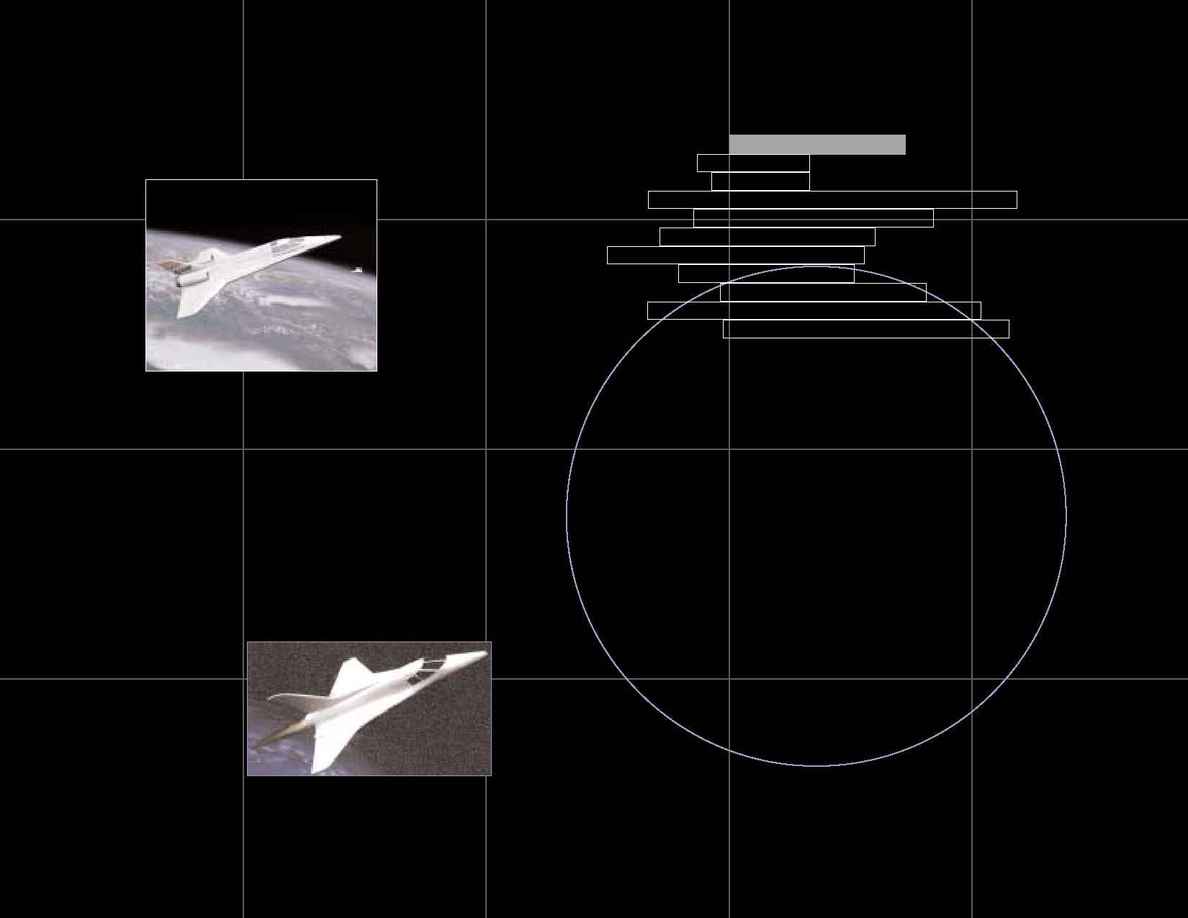
A S C E N D E R
A S C E N D E R
The Bristol Spaceplane Ltd. Ascender capitalizes on the proven design principles
and lessons learned from the successful X-15 sub-orbital aerospace plane program
of the 1950s and 1960s. The Ascender design utilizes proven materials and existing
propulsion systems. It is also capable of conducting flight operations from an
ordinary airfield with the use of conventional jet engines.
Passengers: 2
Flight Crew: 2
Maximum Speed: Mach 4.5*/ 2,970 mph (4,781 kph)
Maximum Altitude: 62 miles (100 km)
Minutes of Zero Gravity: 2
Wing Span: 26 ft (7.9 m)
Length: 45 ft (13.7 m)
Takeoff Weight: 9,900 lbs. (4,500 kg)
Propulsion System: Two Williams-Rolls FJ44 Jet
Engines / One Pratt & Whitney RL 10 Rocket Engine
* Mach calculated at sea level.
Following the proven path of the X-15 program.
RLV Specs
The Ascender flight profile: The vehicle climbs at subsonic speed to an altitude of 26,000 feet
(8 km) under jet engine power. The flight crew then activates the rocket engine and deactivates
the jet engines. Ascender is then pulled up into a steep climb until its rocket fuel is burned to
depletion. At the point of engine cutoff Ascender is climbing close to vertical at a speed of Mach
2.8, beyond which it coasts on a ballistic sub-orbital trajectory to a maximum altitude of 62
miles (100 km). Ascender then follows a ballistic descent back to Earth reaching speeds up to
Mach 3.3. Upon entering the lower denser regions of Earth's atmosphere the flight crew pulls
out of the descent profile and lands at the same airfield from which they departed The total
flight time for Ascender is around 30 minutes, of which two minutes are in space with
weightlessness and a superb view of the Earth below.
